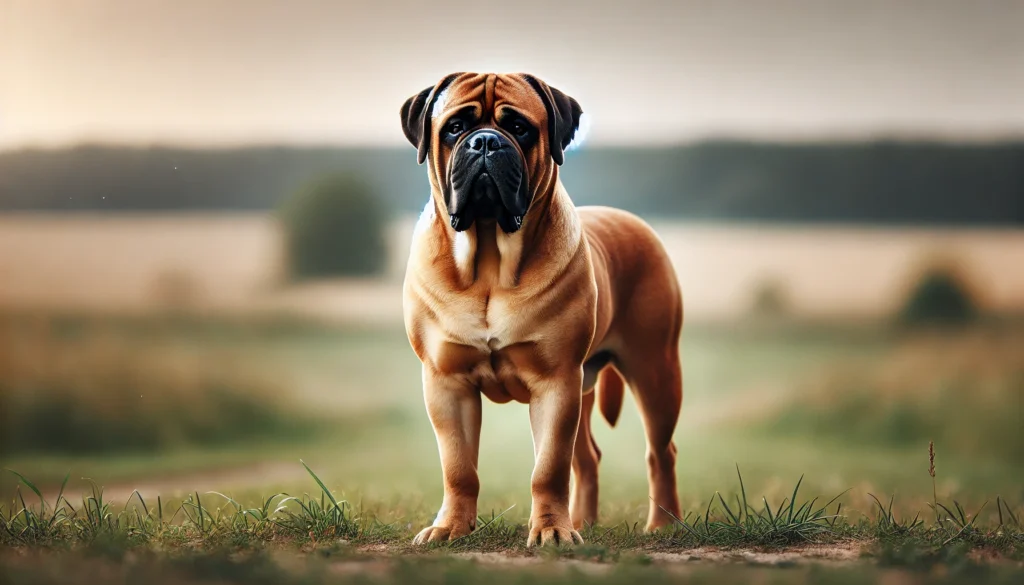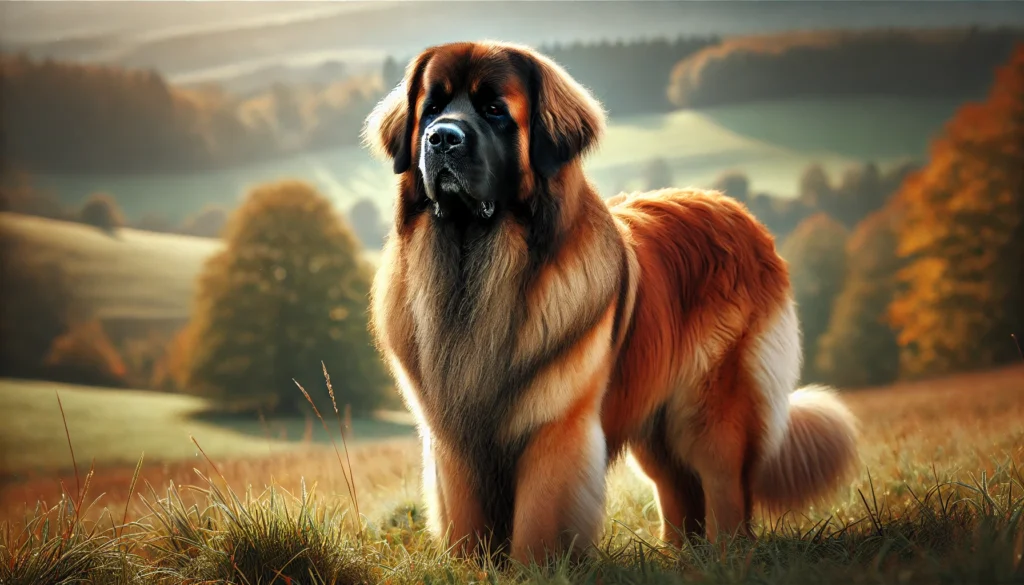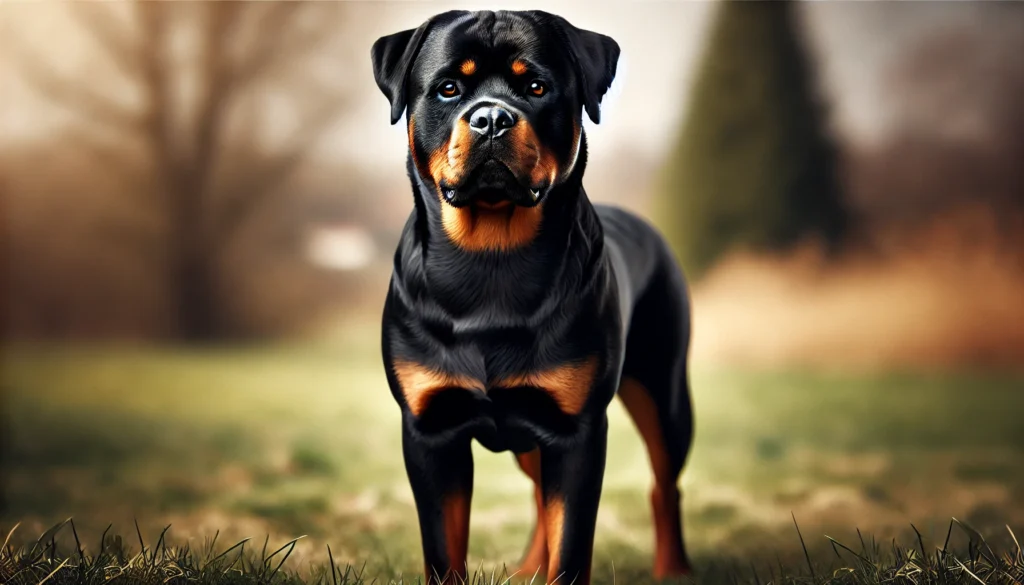17 Biggest Dog Breeds and How to Care for Them

YES!Biggest Dog Breeds come in all shapes and sizes. Whether you are looking for a huge dog that can stand tall and proud or a massive breed with a hefty weight, there is something for everyone. This article explores 17 of the largest dog breeds in the world, how to care for them, and why these giant breeds make great pets. If you’re wondering, “What dog is the largest?” or “What is the biggest dog breed?”—you’ve come to the right place.
CARING FOR A DOG
Caring for a dog, especially a large breed, involves more than just feeding and exercising them. It requires consistent attention to their physical, mental, and emotional well-being. Alongside providing a balanced diet and ample exercise, it’s crucial to keep an eye on their grooming needs, ensuring their coat stays healthy and free from mats. Regular vet check-ups are essential, as large dogs are more prone to certain health issues like joint problems and heart conditions. Socialization and training are also key, helping them develop good behavior and adapt to various environments. Ensuring they have comfortable, safe spaces to rest and play, while maintaining a loving and positive relationship, is essential for a happy, healthy dog.
SIZE
The size of a dog plays a significant role in how you care for them, especially when it comes to large breeds. Larger dogs generally require more space, both indoors and outdoors, to move comfortably and stay active. Their food intake will be higher, and they often need larger-sized beds, toys, and grooming tools. Because of their size, they are also more susceptible to certain health issues, like joint problems and obesity, so it’s important to monitor their weight and ensure they get the right amount of exercise. Additionally, their physical strength means that training and socialization are key to prevent behavioral problems. Size also affects their lifespan, with larger breeds often having shorter life expectancies than smaller dogs.
HEALTH
The health of a big dog requires careful attention due to their size and the specific health challenges they face. Large dog breeds are more prone to certain conditions such as hip dysplasia, arthritis, and heart problems, so regular vet check-ups are crucial. Maintaining a healthy diet and weight is important to avoid putting extra stress on their joints and organs. Exercise is essential, but it should be appropriate to their age and health condition. Regular grooming also helps prevent skin infections, and their ears should be cleaned to avoid infections due to their larger ear flaps. Monitoring for signs of discomfort or changes in behavior can help detect issues early, ensuring your dog enjoys a long, healthy life.
1. Great Dane

Great Danes are often called the world’s largest breed dog. These giant dogs are well known for their imposing height, standing tall enough to reach over 30 inches at the shoulder, with some even hitting heights of 7 feet on their hind legs. While they’re certainly one of the biggest dog breeds, they are also gentle giants, making them great family pets. Their huge size doesn’t mean they are hard to handle; in fact, Great Danes are often affectionate and calm in the home.
Care Tips for Great Danes
- Exercise Needs: Despite their size, they don’t require excessive physical activity but benefit from daily walks.
- Diet and Weight: Due to their large size, it’s important to monitor their food intake carefully, especially in the first few years, to prevent obesity.
2. Saint Bernard

Saint Bernards are massive dogs with a history of being rescue dogs in the Swiss Alps. They are not only among the largest dog species by weight but also known for their large paws and giant breed dog representative species. A Saint Bernard can weigh anywhere from 120 to 180 pounds, depending on gender.
Care Tips for Saint Bernards
- Health Concerns: Their big size dog body can lead to certain health issues, such as hip dysplasia, which requires regular vet checkups.
- Training: Saint Bernards are easy to train, but given their huge size, it’s important to start training early.
3. Mastiff

Mastiffs, including the English Mastiff and the Tibetan Mastiff, are some of the largest dog breeds by weight. The English Mastiff, in particular, holds the title for the heaviest dog ever, reaching a staggering 343 pounds. If you’re looking for a large dog that exudes strength, this breed might be the one.
Care Tips for Mastiffs
- Living Space: Mastiffs need ample space to stretch out. A house with a big yard is perfect.
- Exercise: While not overly active, they still need regular walks and mental stimulation to stay happy.
4. Irish Wolfhound

This giant dog is one of the tallest dog breeds in the world. Standing between 32 to 34 inches tall at the shoulder, the Irish Wolfhound is a remarkable big dog breed known for its long dog breed name and powerful presence.
Care Tips for Irish Wolfhounds
- Socialization: They are very friendly but can be shy. Socialization early on is important to ensure they’re well-behaved around other animals and people.
- Health: They have a shorter lifespan than smaller dogs, so regular vet visits are crucial for maintaining health.
5. Newfoundland

Newfoundlands are known for their extra large dog breeds and are often seen as big mountain dog breeds because of their strong swimming abilities. This breed can weigh up to 150 pounds, making them one of the biggest dog breeds by weight.
Care Tips for Newfoundlands
- Water Safety: Newfoundlands love water, and their thick, waterproof coat makes them excellent swimmers.
- Grooming: Regular grooming is essential due to their thick coat.
6. Leonberger

A Leonberger is a huge dog that combines the strength of a big giant dog with a stunning lion-like mane. This breed is very large and requires a calm environment to thrive. They are highly trainable and are known for being affectionate towards their families.
Care Tips for Leonbergers
- Exercise: They require moderate to high exercise, making them a great choice for families that enjoy outdoor activities.
- Diet: Given their large size, they need a high-quality diet that supports their joint and muscle health.
7. Alaskan Malamute

Alaskan Malamutes are large working dogs originally bred to haul heavy loads in the Arctic. Their large size and thick coat make them perfect for cold climates but also require significant maintenance when it comes to grooming and exercise.
Care Tips for Alaskan Malamutes
- Exercise: They are high-energy dogs and need plenty of physical activity to stay healthy.
- Training: Early socialization and training are key, as they can become territorial and dominant.
8. Rottweiler

Rottweilers are a large dog breed known for their intelligence, strength, and guarding abilities. They are great family dogs but need consistent training and early socialization to ensure they behave well around other animals and children.
Care Tips for Rottweilers
- Exercise: Rottweilers need regular exercise to maintain their health and prevent boredom.
- Training: They are highly trainable but can be stubborn at times.
9. Doberman Pinscher

Dobermans are known for their strength, speed, and agility, making them popular as working dogs. While they aren’t the biggest dog breeds by size, they are certainly among the most powerful and intimidating breeds.
Care Tips for Dobermans
- Training: Dobermans need an experienced owner who can give them clear guidance and training.
- Health: Regular health checks are important, as Dobermans are prone to certain conditions, including heart issues.
10. Great Pyrenees

This is one of the biggest dogs that works in the most beautiful mountain ranges. The Great Pyrenees is often used as a livestock guardian dog, known for being loyal and protective.
Care Tips for Great Pyrenees
- Exercise Needs: While they are large, they don’t need extensive exercise but enjoy roaming around large areas.
- Grooming: Due to their thick double coat, they need frequent grooming.
11. Akita

The Akita is a large-sized dog that comes from Japan, known for its dignified and reserved nature. They can weigh anywhere between 100 and 130 pounds.
Care Tips for Akitas
- Training: Akitas can be independent, so early training is essential.
- Socialization: They can be territorial, so socializing them with other pets early on is recommended.
12. Husky

Huskies are large dogs famous for their striking blue eyes and long neck dog breeds. They are used as sled dogs in cold regions and have a high energy level.
Care Tips for Huskies
- Exercise: Huskies need significant physical exercise, as they are bred for running.
- Grooming: They shed a lot, so frequent grooming is required.
do you know
The Texas Heeler is a highly energetic and intelligent dog breed, known for its exceptional herding abilities. A hybrid of the Australian Shepherd and Australian Cattle Dog (commonly known as the Blue Heeler), the Texas Heeler dog combines the best qualities of both breeds.
13. Belgian Malinois

Belgian Malinois are big dogs known for their agility, intelligence, and protective instincts. These dogs are often used by police and military forces.
Care Tips for Belgian Malinois
- Training: They are highly trainable but require a lot of mental and physical stimulation.
- Exercise: They need a lot of physical activity and space to run.
14. Bullmastiff

Bullmastiffs are huge dogs with a calm and docile temperament. Known for their imposing size, they are excellent guard dogs.
Care Tips for Bullmastiffs
- Socialization: Early socialization is important to ensure they are friendly around other pets and strangers.
- Exercise: They need moderate exercise but should not be overexerted due to their size.
15. German Shepherd

German Shepherds are highly intelligent and versatile. While they are not the largest dog breeds in height, they are among the most powerful and big dog breeds in the working dog category.
Care Tips for German Shepherds
- Training: They excel in training and are used in various working roles.
- Exercise: They need regular physical and mental stimulation.
16. Border Collie

Border Collies are large dog breeds with big energy and a need for constant activity. They are the top choice for herding due to their intelligence.
Care Tips for Border Collies
- Exercise: These dogs need a lot of exercise and mental stimulation.
- Training: Border Collies are highly trainable but can become destructive if not mentally challenged.
17. Tibetan Mastiff

Tibetan Mastiffs are extremely large dogs that were used to guard sheep in the Himalayas. Their imposing size and thick coats make them an excellent choice for colder climates.
Care Tips for Tibetan Mastiffs
- Exercise: They need moderate exercise and are often independent.
- Grooming: Their thick coat requires regular grooming to prevent matting
Conclusion
Large dog breeds bring a unique combination of strength, companionship, and loyalty, making them ideal for families, farms, and individuals who are ready for the commitment of caring for a giant canine. Whether you’re drawn to the towering Great Dane, the muscular Mastiff, or the playful Saint Bernard, each breed offers distinctive qualities that cater to different lifestyles. The sheer size of these dogs can be both awe-inspiring and intimidating, but with the right training, care, and attention, these dogs make exceptional pets.
What is the biggest dog breed?
The Great Dane is widely recognized as the biggest dog breed. These giants can stand up to 34 inches tall at the shoulder, with some males reaching a height of 38 inches or more. Weighing between 110 to 175 pounds, Great Danes are known for their towering size and gentle temperament, often referred to as “gentle giants.” The record for the tallest dog ever recorded goes to a Great Dane named Zeus, who measured an astonishing 44 inches at the shoulder and weighed 155 pounds. Despite their intimidating size, Great Danes are friendly, affectionate, and get along well with children and other pets.
Can a dog live to 17?
Yes, many dogs can live up to 17 years or even longer, depending on factors like breed, size, and overall health. Smaller dog breeds generally live longer than large breeds, with some reaching their late teens or even early twenties. For instance, Chihuahuas, Dachshunds, and Jack Russell Terriers are known for their longevity, often reaching 15-17 years or more with proper care. However, larger breeds like Great Danes and Saint Bernards have a shorter lifespan, typically around 7-10 years. Regular veterinary check-ups, a balanced diet, adequate exercise, and a loving home environment contribute to a dog’s overall health and longevity.
What big dog is easy to take care of?
Among large dog breeds, the Labrador Retriever is often considered one of the easiest to take care of. These dogs are not only large but also extremely friendly, intelligent, and easygoing, which makes them great companions for families, singles, and seniors alike. Labradors have a low-maintenance coat that requires minimal grooming, and their laid-back nature means they adapt well to different living situations. They’re generally healthy, but like any large breed, they can be prone to joint problems. Regular exercise, mental stimulation, and a good diet are key to keeping them happy and healthy.
What is the most caring breed of dog?
The Golden Retriever is widely regarded as one of the most caring dog breeds. Known for their affectionate and gentle nature, Golden Retrievers are especially attentive and loyal to their families. They are extremely social and enjoy being around people, making them excellent family pets. Their caring nature extends beyond their family, as they are often used as service dogs due to their intelligence, calm demeanor, and ability to bond with people. Golden Retrievers are particularly known for their patience and kindness, which makes them great companions for children and elderly people alike.
What is the safest dog to own?
The Labrador Retriever is often considered one of the safest dogs to own due to its friendly, tolerant temperament. Labs are well-known for being gentle, patient, and non-aggressive, making them great for families with children or other pets. They are easy to train and eager to please, which further enhances their suitability as a household pet. Labradors are rarely prone to aggression and are more likely to greet strangers with excitement rather than suspicion, making them an ideal choice for first-time dog owners. Their laid-back attitude and love for socializing make them a top pick for a safe, friendly, and loving companion.
What is the most aggressive dog?
Aggression in dogs can vary greatly depending on upbringing, training, and socialization, but certain breeds have a reputation for being more aggressive if not properly trained or socialized. The Pit Bull Terrier, for example, is often considered the most aggressive breed due to its muscular build and protective nature. However, many Pit Bulls are affectionate and loyal to their families. It’s important to remember that aggression in dogs is not solely determined by breed, but rather by the individual dog’s experiences, environment, and training. With proper care, socialization, and training, even breeds with a reputation for aggression can be friendly and well-behaved.
What is the smartest dog?
The Border Collie is widely regarded as the smartest dog breed. Known for their remarkable intelligence and ability to learn commands quickly, Border Collies excel in obedience, agility, and herding tasks. They are highly trainable and thrive on mental stimulation and tasks that challenge their problem-solving abilities. In fact, Border Collies are often the top performers in competitive obedience trials and dog sports. Their intelligence makes them excellent working dogs, but they require a lot of exercise and mental engagement to prevent boredom. Without sufficient activity, they may become anxious or destructive, so their owners must be prepared for their high energy and intellect.
What is the most loyal dog?
The Akita is often considered one of the most loyal dog breeds. Known for their fierce loyalty and protective nature, Akitas are deeply devoted to their families and will go to great lengths to protect them. Historically used as guard dogs and hunting companions, Akitas are independent but can form strong, unbreakable bonds with their owners. They are particularly loyal to their family members and can be reserved or aloof around strangers. Akitas thrive in environments where they feel they are part of a strong, bonded family and are highly protective of their loved ones. This breed’s loyalty makes them excellent watchdogs and companions.






